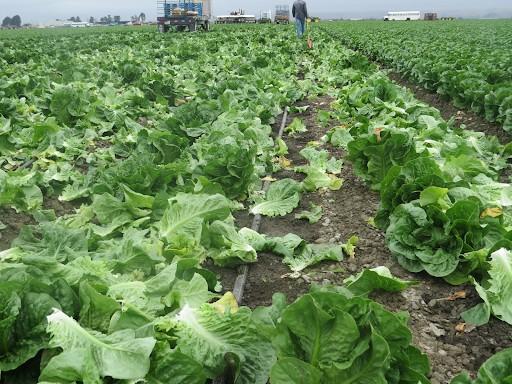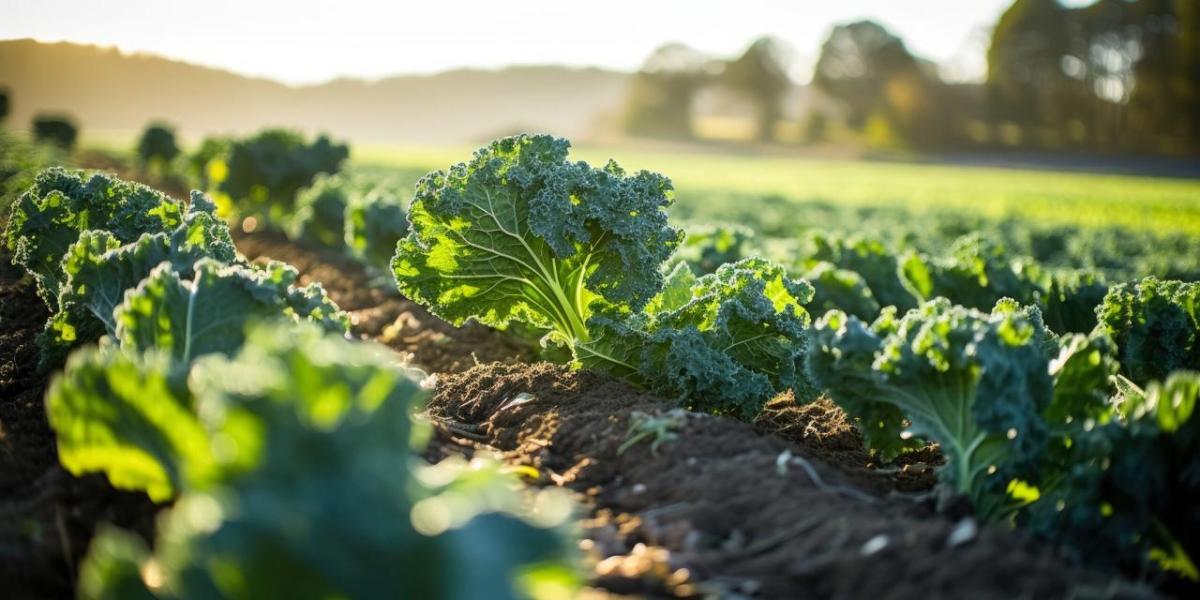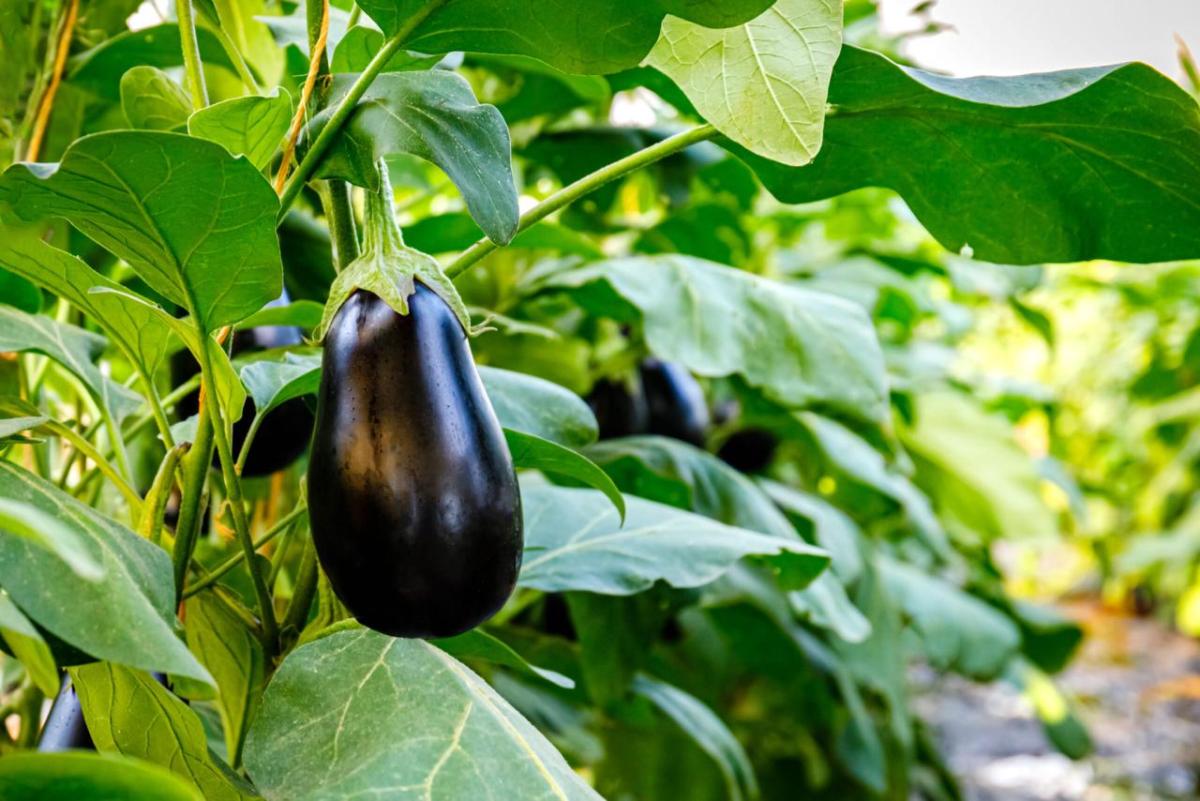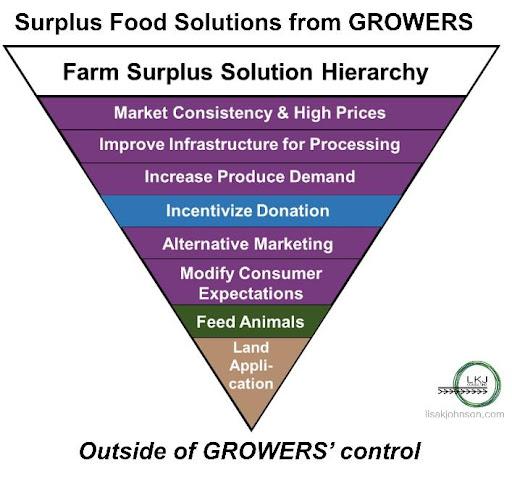Can Farm Food Loss Be Reduced by Retailers and Growers Working Together?
By Lisa K. Johnson Ph.D., Independent Consultant and Researcher
Published 10-31-23
Submitted by The Consumer Goods Forum

Fresh fruit and vegetables are lost and wasted throughout the supply chain at higher rates than other categories of food. In part, this is because of their perishability and handling requirements, and in part, it’s because they are sold by the piece, and not aggregated like grains and milk, or cut like meat or fish.
In developed countries, like the US, there is a significant amount of food wasted but there is also massive potential to better utilize what’s grown on farms. Collecting data is challenging at both ends of the chain. Only a few studies have described food loss on farms for fresh produce. What we know though is that much more food could be directed to human use than has previously been estimated.
What is Driving Farm Food Loss?
In a series of grower interviews, the most common driver mentioned for why product was left in the field unharvested is economic: the price offered didn’t cover the cost of harvest. This means that a crop might be harvested only once or twice, instead of a possible five or six times, because there’s no economic incentive for the farmer to return to the field.
Take for example, this field of kale. Over 166,000 pounds of high-quality curly kale was lost in this 15 acre field because the price didn’t cover the harvest cost.
Or this 10 acre field holding a whopping 184,532 pounds of nutritious eggplant. It was harvested once, with the grower barely breaking even. When the price dropped further, the entire field became food loss and was plowed under.
Those are examples from just two small fields. What about larger fields? Here’s lettuce that has been left unharvested on a very large West Coast farm that grows on thousands of acres.
This happens every day in fresh produce production. The grower has produced at the top of their capacity, planning their crops to meet the market demand, and either the demand doesn’t materialize, or the price doesn’t offer a profit . Moreover, when weather conditions are excellent, the sad irony is that growers may have a bumper crop but the market can’t pivot quickly enough for all the fruits or vegetables to be used as intended — for feeding people. Months of planning and months of production cost (and the related inputs) can be lost. The grower didn’t decide to lose the rest of this crop, though. The market did.

Solutions From Beyond the Farm
So, what? What’s the solution here? The solution is not to harvest this and PUSH that supply into the marketplace. There has to be a PULL through the supply chain in order for this to be consumed by humans, rather than becoming a soil amendment. Growers can’t and don’t harvest just because the crop is “there.” It will just be lost further down the supply chain, which is more expensive, and more environmentally damaging.
As growers have explained to me, the solutions include higher prices paid by buyers, increasing the possibility for processing to extend the shelf life of fresh products, and increasing consumer demand for all types of produce. These are not solutions that growers have any control over. They have to come from other stakeholders.
More productive than blaming one group in particular for this wicked problem, is asking who has the power to change the situation. Procurement departments in retail, food service, and institutions have some strength in this area. There are a number of great ways to support grower-partners in reducing losses. If there were a retailer that partnered with growers to share in their risk, instead of maintaining a purely transactional relationship, that would be an incredible story to tell. It might just be the kind of story that draws in today’s consumer.

What if Retailers Partnered with Growers to Reduce Food Loss?
Produce buyers may consider employing one or more of these strategies in their policies and practices:
- Be transparent about practices that drive or reduce food loss and waste
- Educate procurement departments about the impacts of buying practices on farms
- Share the financial burden of transporting rejected loads to food banks
- Ensure a larger share of fresh produce sales returns to farms
- Reduce waste in-store and redirect the savings to consumers and farms
- Modify specifications for produce SKUs to include a very slightly larger or smaller size
- If taxes are high in your region, find out if VAT on fresh produce can be removed
- Arrange contracts with growers that purchase the entire crop, use some for value-add
- Accept surplus produce for white-label processed products
What the Food Waste Coalition of Action Is Doing
CGF’s Food Waste Coalition of Action has launched a project with several of its members to engage their suppliers on the important issue of farm-stage food loss. This project includes using the beta version of a Global Farm Loss Tool to measure and collect data on the amount of on-farm stage losses for fruits and vegetables. Unique to historical estimates, the Global Farm Loss Tool utilizes Dr. Lisa Johnson’s in-field sampling methodology to collect accurate and consistent data in the field. For more information on our work to reduce upstream food loss, please see here.


The Consumer Goods Forum
The Consumer Goods Forum
The Consumer Goods Forum ("CGF") is a global, parity-based industry network that is driven by its members to encourage the global adoption of practices and standards that serves the consumer goods industry worldwide. It brings together the CEOs and senior management of some 400 retailers, manufacturers, service providers, and other stakeholders across 70 countries, and it reflects the diversity of the industry in geography, size, product category and format. Its member companies have combined sales of EUR 3.5 trillion and directly employ nearly 10 million people, with a further 90 million related jobs estimated along the value chain. It is governed by its Board of Directors, which comprises more than 50 manufacturer and retailer CEOs. For more, please visit: www.theconsumergoodsforum.com.
Join our global community to stay abreast of the latest news on how the consumer goods industry is working together efficiently for positive change and building better lives through better business: Twitter, LinkedIn, YouTube.
Contact:
Lee Green
Director, Communications
+33 1 82 00 95 70
Louise Chester
Communications Officer
+33 1 82 00 95 91
More from The Consumer Goods Forum

